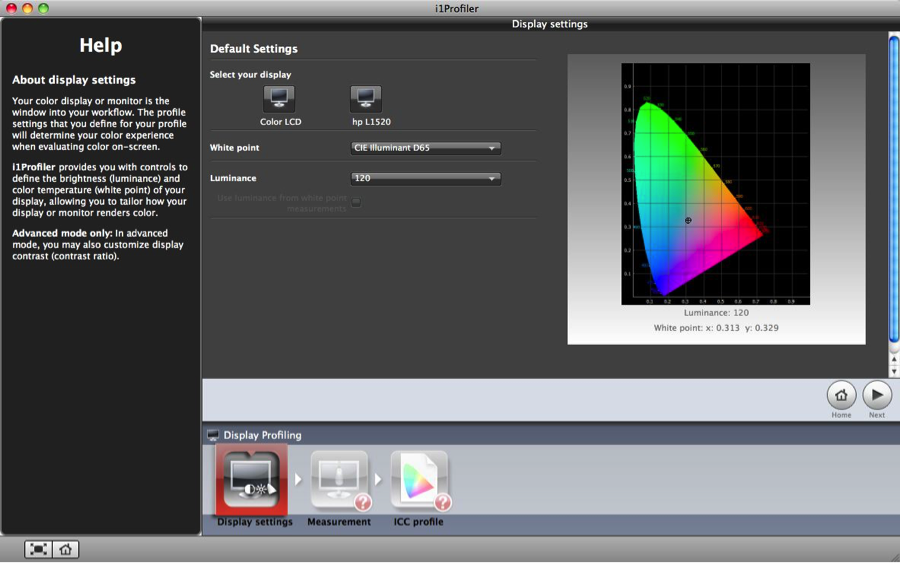
With today’s ICC Color Management workflow you will get equally good results whether you use gamma 1.8 or 2.2.
Macbook color calibration mac#
Mac chose the gamma 1.8 as it was easier for them to match images on a monitor and a printer when using gamma 1.8. In those days, the ICC color manage system was not invented. Historically, Mac computers were using Gamma 1.8 and Window computers 2.2. The gamma number refers to the mathematical gamma function and it is used to describe the un-linear response of the monitor, which originates from the days with CRT tube monitors. To profile a monitor, you will need a specialized monitor calibration solution which includes an application and a color measuring device, typical connected via USB. There are at least a couple of solutions available on the market.įirst part of the Profiling process is about bringing the monitor as close as possible to a standardized setup. To describe such a setup we typically specify 3 parameters: Profiling a monitor basically consist of 3 steps: As long as you have a supporting monitor tab, sit back and watch the magic happen.įor those who like to be hands-on or are interested in getting to know the work that lies behind profiling a monitor, we have provided you with an explanation. If you would like to try out this solution, you need to open Preferences, open Color Tab and push the One-click calibrate button. This feature is a great solution for all of those who do not want to be an expert in monitoring profiling and just want a proven, trustworthy solution setting up for a target of gamma 2.2, 5000K White Point and a brightness of 120 candele/m2.
Macbook color calibration pro#
With the release of Capture One Pro 9.3, we have completed a long on-going collaboration with EIZO. This has resulted in a one-click solution for calibrating the high-end EIZO monitors with integrated calibration sensors. Today, ICC Color Management is an integrated part of the operating systems on both Mac and PC’s, and all serious image applications are using ICC Color Management when displaying images on a monitor.

On a Mac system, where color management have always been an important part of the Mac experience, it may even look acceptable. However, as soon as you really need to rely on what you see on the monitor, you will need to create a monitor ICC profile for it and make sure that your operating system is using it correctly.

Many of the new ones provide nearly 100% of the Adobe RGB (1998) workspace and have a pretty reasonable default calibration. Today’s monitors have improved a lot during the last few years. To learn more about our latest version, click here. NOTE: This article discusses an outdated version of Capture One.


 0 kommentar(er)
0 kommentar(er)
